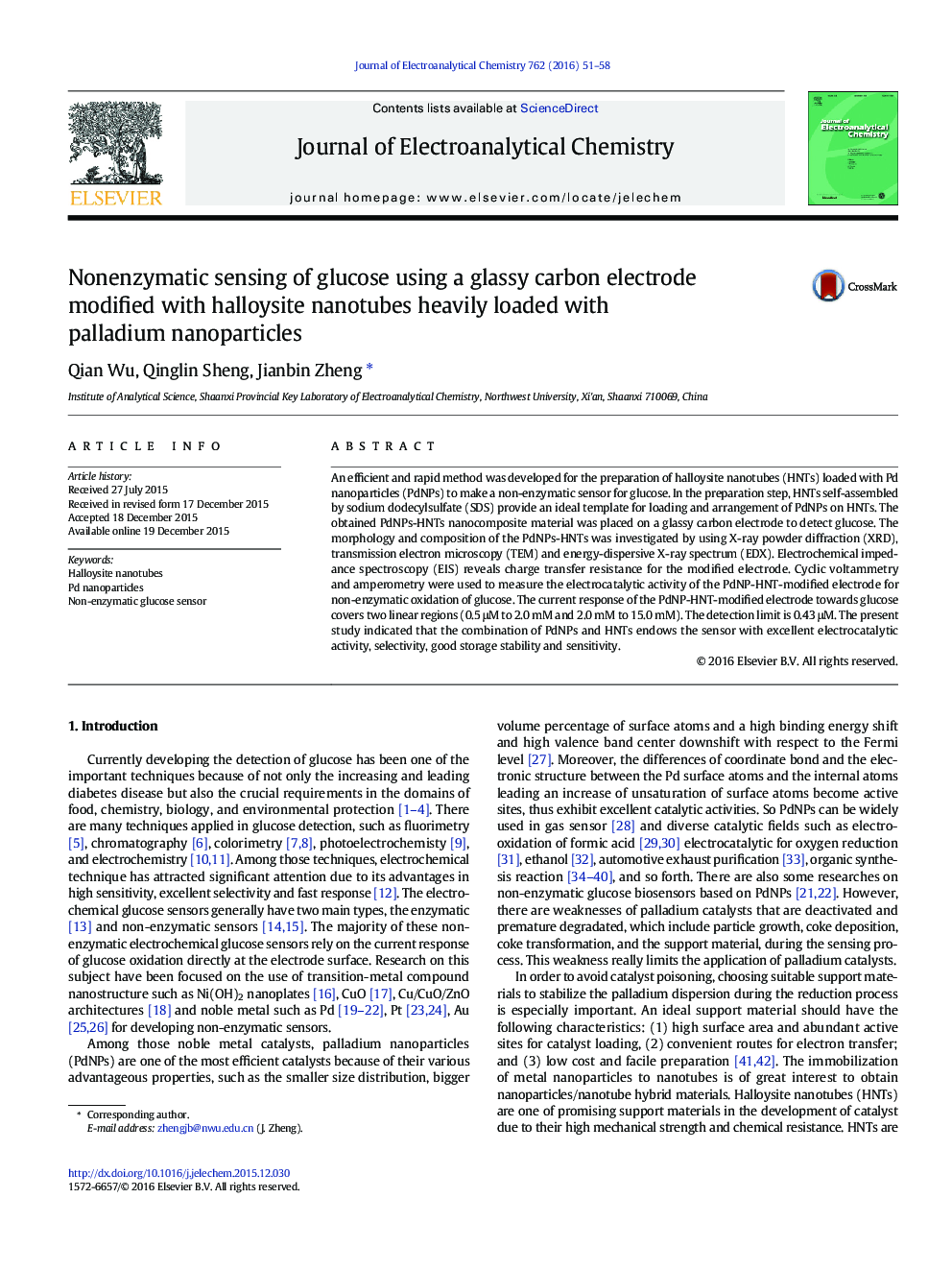| Article ID | Journal | Published Year | Pages | File Type |
|---|---|---|---|---|
| 218094 | Journal of Electroanalytical Chemistry | 2016 | 8 Pages |
An efficient and rapid method was developed for the preparation of halloysite nanotubes (HNTs) loaded with Pd nanoparticles (PdNPs) to make a non-enzymatic sensor for glucose. In the preparation step, HNTs self-assembled by sodium dodecylsulfate (SDS) provide an ideal template for loading and arrangement of PdNPs on HNTs. The obtained PdNPs-HNTs nanocomposite material was placed on a glassy carbon electrode to detect glucose. The morphology and composition of the PdNPs-HNTs was investigated by using X-ray powder diffraction (XRD), transmission electron microscopy (TEM) and energy-dispersive X-ray spectrum (EDX). Electrochemical impedance spectroscopy (EIS) reveals charge transfer resistance for the modified electrode. Cyclic voltammetry and amperometry were used to measure the electrocatalytic activity of the PdNP-HNT-modified electrode for non-enzymatic oxidation of glucose. The current response of the PdNP-HNT-modified electrode towards glucose covers two linear regions (0.5 μM to 2.0 mM and 2.0 mM to 15.0 mM). The detection limit is 0.43 μM. The present study indicated that the combination of PdNPs and HNTs endows the sensor with excellent electrocatalytic activity, selectivity, good storage stability and sensitivity.
